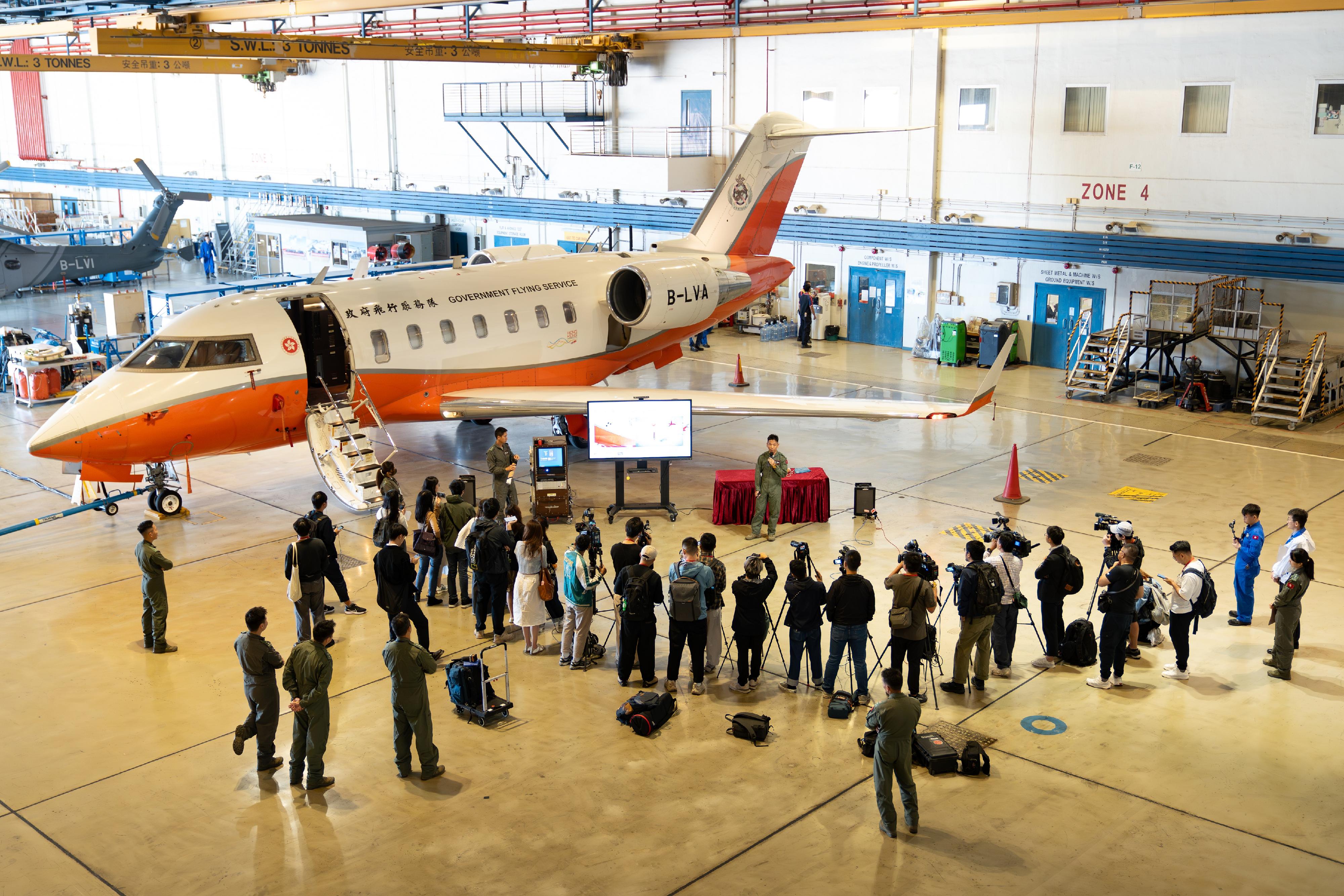GFS and HKO introduce operation Tropical Cyclone Reconnaissance (with photos)
*****************************************************************************
The GFS, during typhoons Saola and Koinu, dispatched a Challenger 605 fixed-wing aircraft to deploy sondes at the designated co-ordinates and altitudes provided by the HKO to collect tropical cyclone meteorological data to enhance the monitoring of typhoons and preparedness.
The Senior Scientific Officer (Aviation Meteorological Data Analytics) of the HKO, Mr Cheung Ping, said, "The use of the dropsonde system enables first-hand meteorological data to be collected at various altitudes of the atmosphere, complementing the lack of conventional weather observations over the ocean, and facilitating the HKO in the analysis of the intensity and three-dimensional structure of tropical cyclones. The use of collected data in numerical weather prediction models could help improve the capability in predicting tropical cyclones."
Pilot I (Aeroplane) of the GFS, Captain Elaine Chan, said that the dropsonde system provides a safer and more effective way to collect meteorological data than sending an aircraft into a tropical cyclone. However, the mission still involves certain risks.
"Despite the fact that the crew is entering a tropical cyclone at a high altitude, they may still encounter conditions such as severe turbulence, hail and icing during the mission. Therefore, the crew needs to constantly review weather and aircraft conditions, to ensure that the mission is carried out safely. In the event of cabin depressurisation or other emergencies, the crew must respond immediately or even abort the mission," Captain Chan said.
The GSF and the HKO officially introduced the dropsonde system in 2016 to enhance the collection of meteorological data, with the first mission completed in September 2016. The GFS Challenger 605 has since conducted 57 dropsonde missions to collect meteorological data for 38 tropical cyclones, including typhoons Mangkhut and Hato in 2017 and typhoons Saola and Koinu in recent months.
The dropsonde system deploys an aircraft to release the dropsonde unit from a high altitude. The dropsonde unit, which contains meteorological sensors and a global positioning system, records wind direction, wind speed, temperature, air pressure and humidity at different locations during descent. The data is transmitted back to the aircraft through radio transmission, then to the HKO in real time via the satellite system for analysis.
Ends/Friday, November 24, 2023
Issued at HKT 12:08
Issued at HKT 12:08
NNNN






